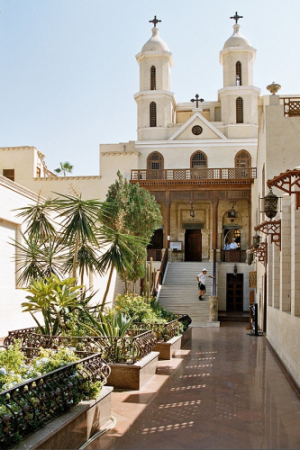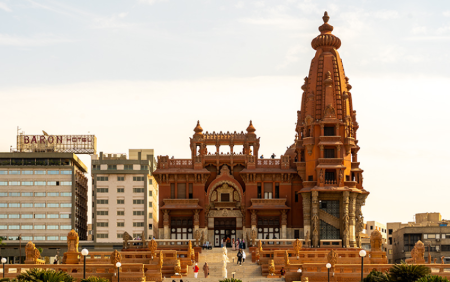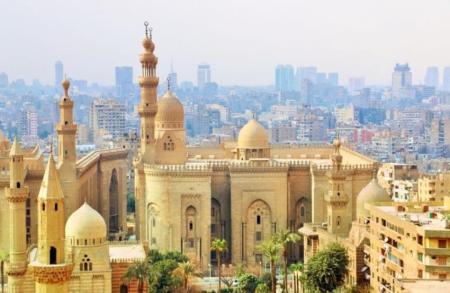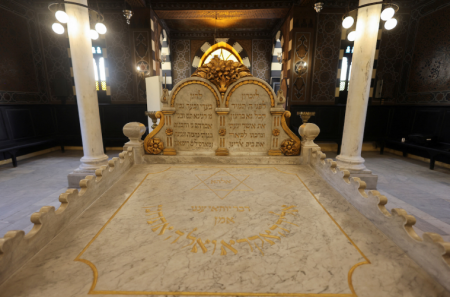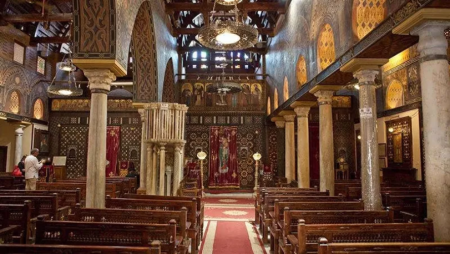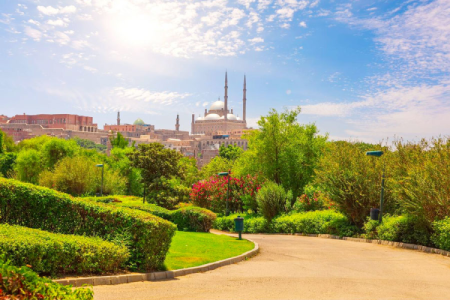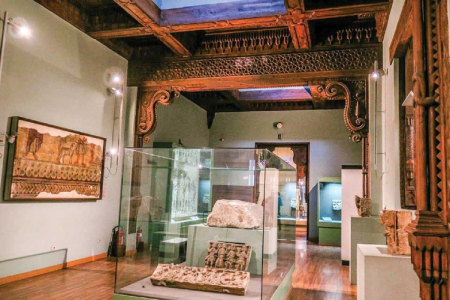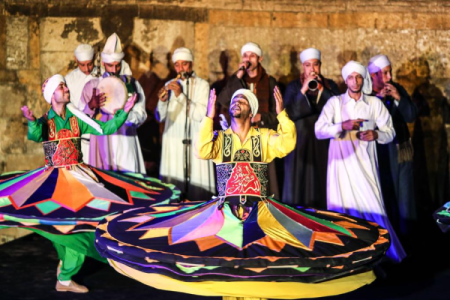Abdeen Palace

Abdeen Palace: The Royal Jewel of Cairo’s Architectural Heritage
Abdeen Palace stands as one of the most magnificent royal residences in Cairo city, a symbol of Egypt’s regal past and a beacon of neoclassical elegance. This palace isn’t just a relic of history—it’s a living museum that reflects the power, artistry, and grandeur of a bygone era. Constructed during the reign of Khedive Ismail in the late 19th century, Abdeen Palace redefined Cairo’s architectural landscape, ushering in a new age of opulence and European influence in Egyptian design. With its luxurious halls, sprawling gardens, and ornate details, the palace became the beating heart of royal and political life. Today, it continues to captivate travelers, historians, and architecture lovers alike. Walking through its marble corridors feels like stepping into a chapter of history where Egypt’s monarchy shaped the nation’s modern identity. For anyone exploring the treasures of Cairo, Abdeen Palace is an essential stop that pairs perfectly with famed attractions like the Egyptian Museum of Cairo and the bustling Khan al-Khalili Cairo bazaar. It’s not merely a building—it’s a time capsule of Egypt’s royal legacy.
Whether you’re drawn by its political history, ceremonial halls, or museum collections, Abdeen Palace offers a fascinating journey through Egypt’s monarchical evolution. From the days of Khedive Ismail to the modern republic, its walls have witnessed events that reshaped the nation. For travelers planning Egypt Travel Packages, including a guided tour of Abdeen Palace is a brilliant way to blend cultural curiosity with architectural wonder. The palace’s layered history, intricate craftsmanship, and royal charm leave visitors spellbound, offering a vivid connection to Egypt’s regal past while showcasing the cultural fusion that defines Cairo’s skyline.
The History of Abdeen Palace: From Khedive Ismail’s Vision to Modern Egypt
Khedive Ismail commissioned Abdeen Palace in 1863, inspired by his desire to rival the royal residences of Europe. Determined to position Cairo as the ‘Paris of the East,’ Ismail enlisted French, Italian, and Egyptian architects to craft a palace that embodied sophistication and grandeur. Completed in 1874, Abdeen Palace replaced the medieval citadel as Egypt’s royal seat of government. Its design echoed the best of European neoclassicism blended with subtle Oriental influences, setting a new architectural standard for Egyptian palaces. Over time, it became the epicenter of royal ceremonies, state functions, and diplomatic receptions.
When Egypt transitioned from monarchy to republic, Abdeen Palace adapted gracefully to the changing tides of history. The building transformed into a museum, preserving the royal family’s artifacts, gifts, and documents. Today, it houses multiple museums, including collections of weapons, medals, and royal portraits that narrate Egypt’s evolution from Ottoman rule to independence. Within its walls, visitors sense the pulse of history—echoes of royal banquets, political shifts, and cultural transformation. Abdeen Palace is not just an edifice; it’s a living embodiment of Egypt’s resilience and adaptability, bridging its royal past with its modern identity.
Architectural Brilliance: A Fusion of European Design and Egyptian Majesty
The architectural splendor of Abdeen Palace is nothing short of mesmerizing. Crafted by French architect Léon Rousseau, it fuses Renaissance and Baroque styles with delicate Egyptian motifs. The façade, adorned with intricate carvings and symmetrical columns, radiates royal sophistication. Inside, lavish halls feature gilded ceilings, crystal chandeliers, and marble staircases that reflect European artistry at its peak. Each room tells a story—be it the Throne Room’s majestic gold décor or the Mirror Hall’s decadent reflections of royal glamour. The palace’s gardens, spread across vast acres, offer a serene contrast to its ornate interiors, echoing French landscaping traditions reminiscent of Versailles.
Beyond its artistic beauty, Abdeen Palace was an architectural marvel for its time. Modern amenities such as electricity, telephones, and advanced ventilation systems were integrated early on, showcasing Egypt’s embrace of modernization. Visitors wandering through these grand halls are often awestruck by the harmony of color, texture, and light. The palace’s design not only celebrates royal opulence but also symbolizes Egypt’s openness to global cultural exchange. This architectural masterpiece stands shoulder to shoulder with other landmarks like the the Alabaster Mosque and Citadel of Salah El-Din, representing Cairo’s layered and diverse architectural identity.
The Royal Collections and Museums Inside Abdeen Palace
Abdeen Palace is more than architecture—it’s a treasure chest of royal artifacts and cultural history. Its museums are meticulously curated to display Egypt’s regal legacy. The Arms Museum showcases an extraordinary collection of weapons, from intricately designed swords to antique firearms gifted by world leaders. The Silver Museum gleams with European and Ottoman silverware once used in royal banquets, while the Presidential Gifts Museum reveals the diplomacy behind Egypt’s global relationships. Each exhibit unveils pieces of Egypt’s story, blending art, politics, and craftsmanship.
Visitors often find the Royal Family Museum particularly captivating. Portraits of kings, queens, and statesmen adorn the walls, offering glimpses into the personalities that shaped modern Egypt. The palace also contains historical documents, medals, and uniforms that illustrate Egypt’s journey from monarchy to republic. Every gallery feels immersive, inviting travelers to imagine the grandeur of royal life. For those keen on history, these collections rival the cultural depth found in The National Museum of Egyptian Civilization, yet with a distinctly royal narrative.
Symbolism and Cultural Influence of Abdeen Palace in Egyptian Identity
Abdeen Palace is more than a royal residence—it’s a national emblem of Egypt’s transformation. It symbolizes the country's leap from Ottoman provincial rule to a modern, independent state. The palace became a stage for Egypt’s most defining political moments: declarations, treaties, revolutions, and royal ceremonies. Its walls bear silent witness to shifts in power, cultural revolutions, and reforms that shaped Egypt’s identity. Today, Abdeen Palace remains a cultural and educational center, teaching new generations about the country’s royal lineage and artistic grandeur.
Its influence extends beyond history into Egypt’s modern tourism narrative. For travelers exploring through Egypt Excursions or planning Egypt Luxury Tours, Abdeen Palace stands as an essential destination. Its blend of art, architecture, and power captivates both scholars and tourists. The palace’s continued preservation reflects Egypt’s dedication to honoring its royal heritage while inspiring pride in its cultural identity.
Visitor Experience: Exploring Abdeen Palace Today
Visiting Abdeen Palace today offers an immersive dive into Egypt’s royal history. The palace’s restoration ensures that every chandelier sparkles as it did in the 19th century. Visitors can stroll through elaborately decorated halls, admire antique furniture, and view the intricate frescoes adorning the ceilings. Guided tours provide detailed historical narratives, tracing how the palace evolved through colonialism, monarchy, and revolution. The experience often leaves visitors in awe of Egypt’s artistic legacy and architectural mastery.
Located in the heart of Cairo, Abdeen Palace offers easy access to nearby attractions. After exploring its royal chambers, travelers can continue their cultural journey through places like Al Azhar Mosque or unwind in the lush greenery of Al Azhar Park. The palace’s blend of history and elegance provides an unforgettable experience, ideal for photography enthusiasts and cultural explorers alike. Those seeking a deeper connection to Egypt’s royal heritage often include Abdeen Palace as a highlight of their Egypt Vacations Packages.
FAQs about Abdeen Palace
Where is Abdeen Palace located?
Abdeen Palace is situated in downtown Cairo, Egypt, near the central Abdeen Square. Its strategic location places it close to many of Cairo’s most famous landmarks, making it easily accessible during sightseeing tours.
Who built Abdeen Palace?
Khedive Ismail commissioned the construction of Abdeen Palace in 1863 as part of his vision to modernize Cairo. The French architect Léon Rousseau designed the palace, blending European architectural styles with Egyptian influences.
What can visitors see inside Abdeen Palace?
Visitors can explore several specialized museums inside the palace, including the Arms Museum, Silver Museum, Royal Family Museum, and Presidential Gifts Museum. Each section displays fascinating artifacts that tell Egypt’s royal and political story.
When was Abdeen Palace opened to the public?
Abdeen Palace opened to the public as a museum in 1983 after extensive restoration. It remains one of Cairo’s most visited historical sites, attracting both local and international tourists fascinated by Egypt’s royal past.
Why is Abdeen Palace important to Egypt’s history?
Abdeen Palace is significant because it marked Egypt’s transition into a modern era under Khedive Ismail. It served as the royal residence for Egypt’s rulers and witnessed crucial political events that shaped the country’s path to independence and modernization.




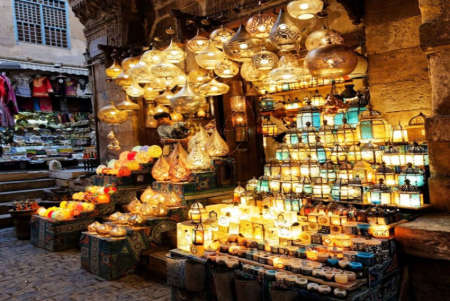
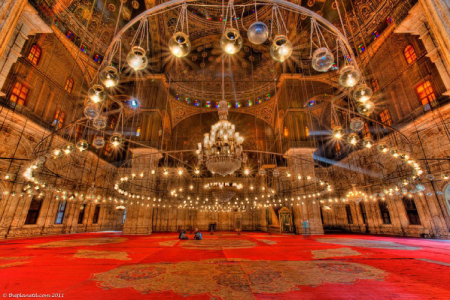


.png)


